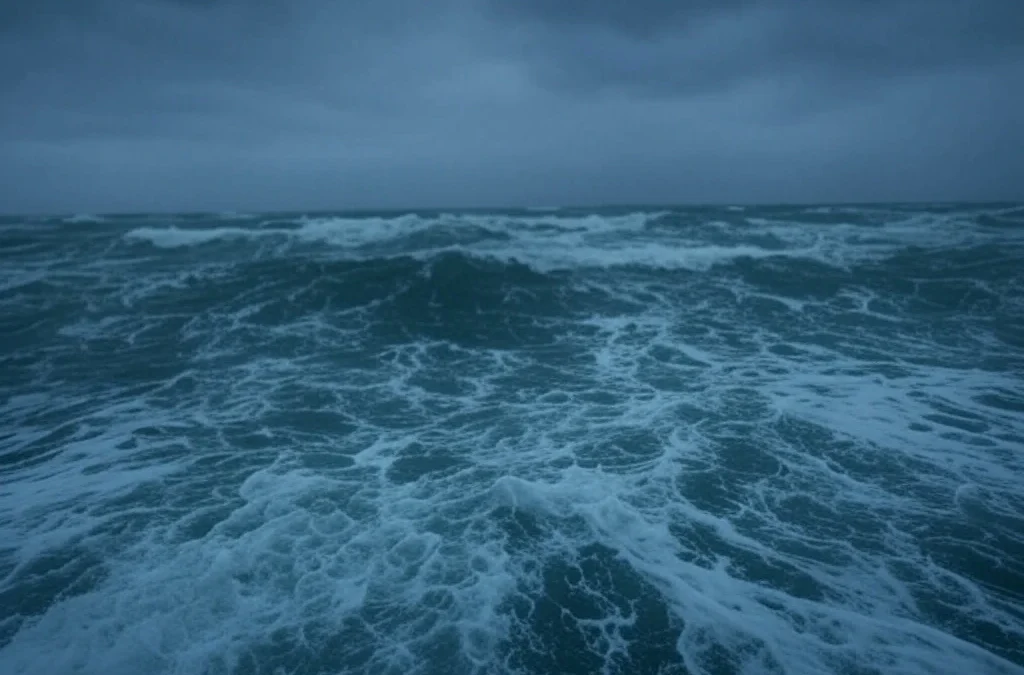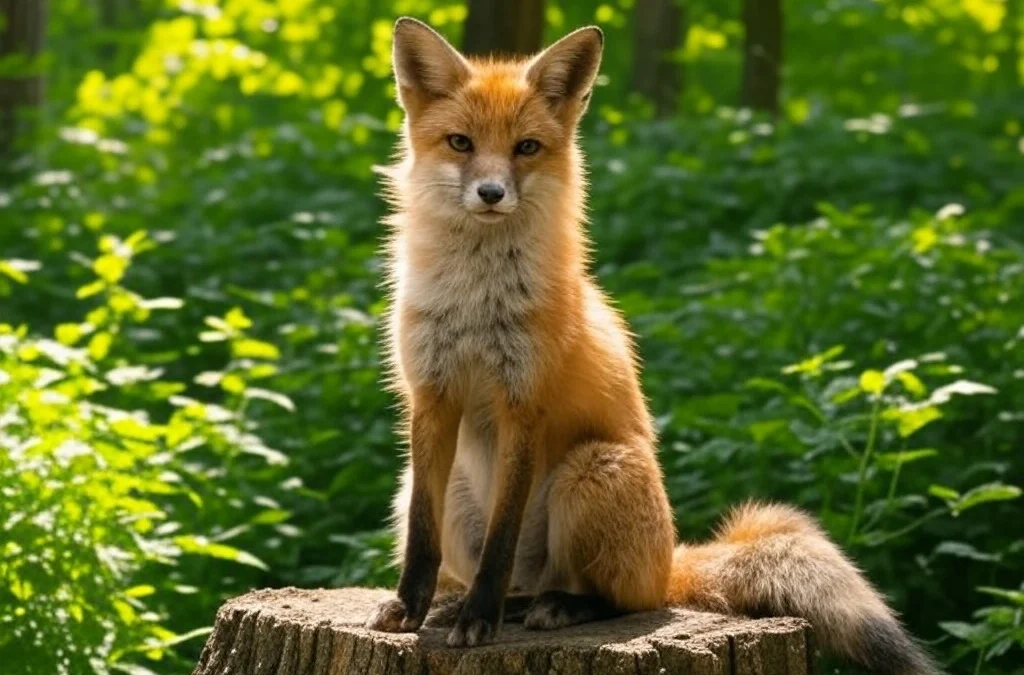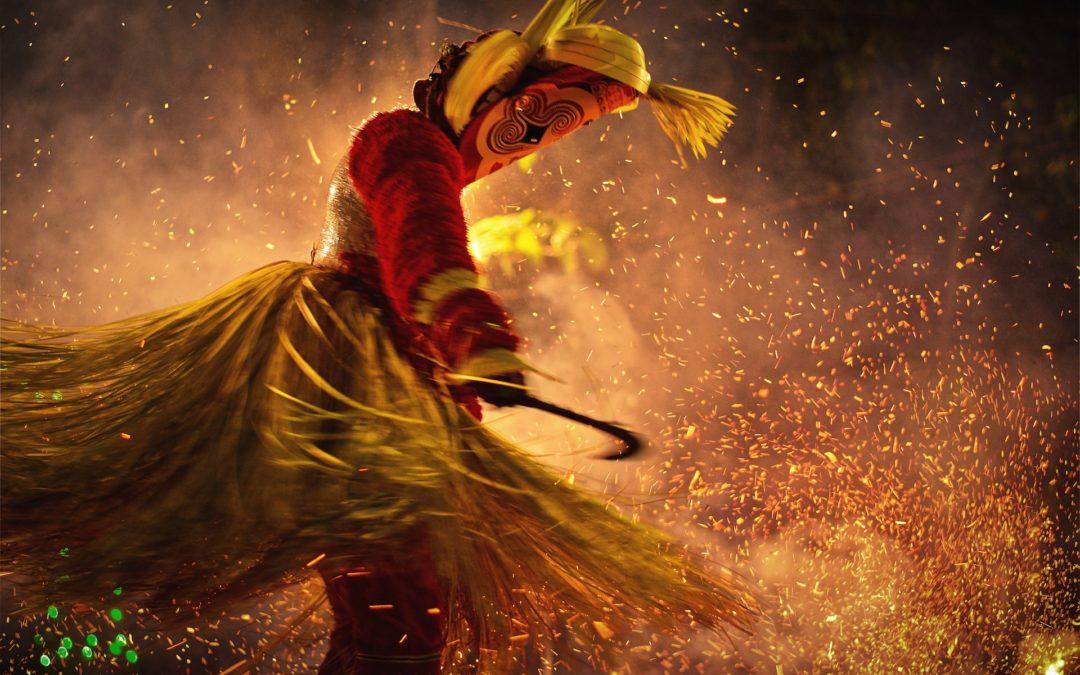Cultural expressions are the unique and fascinating ways in which people from different parts of the world communicate, create art, and express themselves through their customs, traditions, and beliefs. These expressions are a rich source of diversity and creativity, and they play an essential role in shaping our understanding and appreciation of different cultures. From dance and music to cuisine and fashion, cultural expressions provide a window into the history, values, and worldview of different societies, making them a vital part of our shared human heritage.
In this article, we will explore 30 examples of cultural expressions from around the world. We will delve into the rich history and meaning behind each expression, exploring the cultural significance and impact they have had on society. Through this journey, we hope to deepen our appreciation and understanding of the diverse range of cultural expressions that exist and celebrate the beauty and uniqueness of each one. Whether you are a cultural enthusiast, a student of history, or simply curious about the world around you, this article is sure to captivate and inspire you. So join us as we embark on a journey through the rich tapestry of global cultural expressions!
The Most Examples of Cultural Expression
1. Literature
Literature is one of the most powerful examples of cultural expression. From the earliest epic poems to contemporary novels, literature has been a way for cultures to express their unique experiences, values, and beliefs. Works of fiction, poetry, and drama give voice to marginalized groups, challenge societal norms, and reflect the human condition in ways that resonate across generations. In addition to its artistic and aesthetic value, literature has played a crucial role in shaping history and culture. From the works of Shakespeare to the novels of Toni Morrison, literature has challenged dominant narratives and given voice to the marginalized. It has also helped us to understand the complexities of human nature and the world we live in.
2. Music
Music is another powerful example of cultural expression that has the ability to evoke deep emotions and connect people across borders and languages. From classical music to hip-hop, music has the power to express complex ideas and emotions in a way that transcends language barriers. In addition to its emotional and cultural impact, music has also played an important role in political and social movements. From Bob Dylan’s protest songs to Beyoncé’s celebration of Black identity and empowerment, music has been a powerful tool for social change throughout history.
3. Art
Art is yet another example of cultural expression that has the ability to capture the essence of a culture and express ideas in a visual and tangible way. From ancient cave paintings to contemporary installations, art has been a way for cultures to express their values, beliefs, and experiences in a way that resonates across generations. In addition to its aesthetic value, art has played a crucial role in shaping history and culture. From the works of Leonardo da Vinci to those of Frida Kahlo, art has challenged dominant narratives and given voice to the marginalized. It has also helped us to understand the complexities of human nature and the world we live in.
4. Dance
Dance is a universal form of expression that transcends language and cultural barriers. It can be used to convey a range of emotions, tell stories, and celebrate cultural traditions. From the graceful movements of ballet to the rhythmic beats of hip-hop and salsa, dance offers a rich and diverse range of styles that reflect the cultures they originate from. Ballet, for example, is often associated with elegance and refinement, while hip-hop and salsa are more energetic and expressive. Through dance, people are able to connect with their own culture and traditions, as well as appreciate and learn about the cultures of others.
5. Film
Film is a powerful art form that has the ability to entertain, inspire, and educate. It has become a global cultural phenomenon, with films from around the world being watched and appreciated by audiences of all ages and backgrounds. Some of the most important films of all time, such as Citizen Kane, Casablanca, Star Wars, and The Godfather, have left an indelible mark on popular culture and have been influential in shaping the way we view the world. Film has the power to capture our imagination, evoke our emotions, and challenge our perspectives, making it an important vehicle for cultural expression and social commentary.
6. Architecture
Architecture is a reflection of the values and aspirations of a society, as well as its cultural and historical context. It is a form of cultural expression that has evolved over thousands of years, reflecting the changing needs and aspirations of different civilizations. From the pyramids of Egypt, which were built as tombs for pharaohs, to the Parthenon in Greece, which was a temple dedicated to the goddess Athena, and the Taj Mahal in India, which was built as a mausoleum for the emperor’s wife, architecture tells the story of our history and culture. It also has the ability to shape our environment and influence our way of life, making it an important form of cultural expression.
7. Philosophy
One of the most fascinating examples of cultural expression is philosophy. This discipline has been around for thousands of years and has played a significant role in shaping societies and cultures. Philosophy explores fundamental questions about existence, morality, and the nature of reality. It asks the big questions, such as “what is the meaning of life?” and “what is the nature of the universe?”. Famous philosophers such as Plato, Aristotle, Confucius, and Immanuel Kant have all contributed to the development of philosophical thought. Their ideas and theories have influenced cultures and societies throughout history. For example, Plato’s theory of forms has influenced Western philosophical thought for centuries, while Confucianism has had a significant impact on Eastern cultures and societies.
8. Religion
Religion is another example of cultural expression that has played a vital role in shaping societies and cultures worldwide. Religion encompasses beliefs and practices that shape the lives of billions of people worldwide. Examples include Christianity, Islam, Judaism, Hinduism, and Buddhism. Religion provides a framework for understanding the world, answering questions about the meaning of life and the purpose of existence. It has been a source of inspiration and comfort for many people, but it has also been a source of conflict and controversy throughout history. The influence of religion can be seen in art, literature, music, and architecture, as well as in the social and political structures of many societies.
9. Fashion
Fashion is a unique form of cultural expression that allows individuals to showcase their personal style and cultural identity through the clothes they wear. Fashion trends vary widely across different regions and time periods, but they all serve the same purpose – to express oneself and connect with others through clothing. The kimono in Japan, for example, is a traditional garment that has been worn for centuries and is still popular today. It is characterized by its simple and elegant design and is often worn on special occasions. The saree in India is another example of a traditional garment that is still worn today. It is a long piece of cloth that is draped around the body and comes in a variety of styles and colors. The tuxedo in Western fashion is a more modern example of formal wear that is often worn to black-tie events. Finally, the hijab in Islamic dress is a symbol of modesty and is worn by Muslim women as a sign of their faith. Fashion plays an important role in cultural expression by allowing individuals to showcase their unique identities and connect with others who share similar values and beliefs.
10. Cuisine
Cuisine is yet another example of cultural expression that has played an essential role in shaping societies and cultures worldwide. Cuisine encompasses the food and drink of a particular culture, including traditional dishes and ingredients. Examples include Italian pasta, French croissants, Mexican tacos, Japanese sushi, and Indian curry. Cuisine reflects the history, geography, and cultural traditions of a particular society. It provides a unique insight into the culture and lifestyle of a community. Traditional dishes and ingredients often have a rich history and symbolism attached to them, reflecting the values and beliefs of the culture that created them. Cuisine is also a way for people to connect with each other and share their cultural heritage.
11. Festivals
Festivals are cultural celebrations that mark important occasions and bring communities together. They are often characterized by their colorful decorations, music, dancing, and food. Festivals can take many different forms, from religious celebrations to secular events, and are an important way for communities to come together and express their cultural identities. The Chinese New Year, for example, is a 15-day celebration that marks the beginning of the lunar new year. It is characterized by its dragon and lion dances, fireworks, and traditional food like dumplings and rice cakes. Diwali in India is another important festival that celebrates the victory of good over evil and the triumph of light over darkness. It is characterized by its colorful decorations, lighting of candles and lamps, and sharing of sweets and snacks. Mardi Gras in New Orleans is a festival that is celebrated before the Christian season of Lent. It is characterized by its colorful parades, elaborate costumes, and lively music. Finally, Carnival in Brazil is a festival that is celebrated before the start of Lent and is known for its elaborate costumes, samba dancing, and street parties. Festivals play an important role in cultural expression by bringing communities together and allowing individuals to express their cultural identities in a fun and festive way.
12. Folklore and mythology
Folklore and mythology are fascinating examples of cultural expression that offer a glimpse into a society’s beliefs and traditions. These stories and legends are often passed down orally, from generation to generation, and are deeply rooted in a culture’s history and values. Greek mythology, for example, tells tales of powerful gods and goddesses who embody different aspects of human nature, while African folktales often teach moral lessons through the adventures of animals or wise old men.
13. Theater
Theater is another powerful form of cultural expression that has been around for centuries. From ancient Greek tragedies to modern-day Broadway productions, theater provides a platform for storytellers to explore universal themes and emotions. Whether it’s a tragedy that explores the depths of human suffering or a comedy that pokes fun at societal norms, theater has the power to provoke thought and emotion in its audience.
14. Television
Television, on the other hand, is a relatively new medium that has had a profound impact on culture and society. With the rise of streaming services like Netflix and Hulu, television has become more accessible than ever, and has given rise to groundbreaking shows that have captured the hearts and minds of millions. From The Simpsons, which revolutionized the animated sitcom, to Game of Thrones, which redefined the epic fantasy genre, television has the power to shape our cultural landscape and provide a window into our collective consciousness.
15. Sports
Sports are another form of cultural expression that bring people together and reflect cultural values and traditions. Each sport has its own unique set of rules and cultural significance, making them a powerful tool for promoting cultural exchange and understanding. Soccer (football), for example, is the most popular sport in the world and is played in almost every country. It is known for promoting teamwork and fair play, and is a reflection of the global nature of our society. Basketball, on the other hand, is a sport that originated in the United States and has since become popular around the world. It is characterized by its fast-paced nature and emphasis on individual skill and athleticism. Baseball is another sport that is deeply ingrained in American culture, and is known for its rich history and traditions. Cricket, rugby, and martial arts like karate and taekwondo are other examples of sports that reflect cultural values and traditions from different parts of the world. By participating in sports, individuals can connect with others and develop a deeper understanding of different cultures and ways of life.
16. Technology
Technology has revolutionized the way we communicate, work, and live. Advances in science and engineering have brought us the internet, smartphones, and social media, which have fundamentally transformed how we interact with each other and the world around us. These technological innovations have also opened up new possibilities for cultural expression, enabling people to share their ideas, traditions, and art with a global audience. Through online platforms and social media, people from different parts of the world can connect and collaborate on creative projects, showcasing their unique cultural expressions and celebrating diversity.
17. Folk music
Folk music is another powerful example of cultural expression. It is a genre of music that is created and performed by everyday people, often passed down through oral tradition. This form of music is deeply rooted in cultural traditions and reflects the history, struggles, and joys of a particular community or region. From Appalachian folk music in the United States to Irish jigs and reels and African American spirituals, folk music has a universal appeal that transcends language barriers and cultural boundaries. Folk music provides a glimpse into the lives of people from different parts of the world and offers a unique insight into their cultural heritage.
18. Poetry
Poetry is a form of literature that uses language to convey emotions, ideas, and experiences in a condensed and expressive way. It is an art form that is often associated with deep and intense emotions, exploring themes such as love, death, and nature. Poets such as Emily Dickinson, Langston Hughes, and Robert Frost are celebrated for their ability to capture the essence of the human experience in their work. Poetry allows us to explore complex ideas and emotions in a way that is both personal and universal, providing us with a deeper understanding of ourselves and the world around us.
19. Comics and graphic novels
Comics and graphic novels have become a ubiquitous form of cultural expression in recent years, thanks to their ability to tell complex stories through compelling visuals. They offer a unique blend of literary and artistic elements that allow for a broad range of themes and genres, from superhero epics to autobiographical tales. What sets comics and graphic novels apart is their ability to create a visceral and immersive experience for readers, as they visually depict characters and worlds in a way that engages the imagination.
20. Architecture
Architecture, on the other hand, is a cultural expression that speaks to the way we shape and inhabit the world around us. It has been a fundamental part of human culture since ancient times, as evidenced by the towering pyramids of Egypt, the awe-inspiring temples of Angkor Wat, and the intricate Gothic cathedrals of Europe. Modern architecture has seen a rise in iconic buildings that serve as symbols of national identity and cultural pride, such as the Burj Khalifa in Dubai and the Guggenheim Museum in Bilbao. Architecture is a powerful form of cultural expression because it not only reflects the values and aspirations of a society, but it also shapes the physical and emotional landscape in which we live.
What is Cultural Expression?
Culture is an incredibly complex and multifaceted concept that encompasses a wide variety of human practices, beliefs, values, and traditions. One of the most important aspects of culture is its expression, which refers to the various forms of art, music, dance, literature, and other creative endeavors that people use to communicate their beliefs and ideas to others. Cultural expressions are an integral part of human societies, and they play a vital role in shaping our understanding of ourselves and the world around us.
Cultural expressions are essentially the creative products of a culture, and they can take many different forms. For example, music is a common cultural expression that is found in virtually every society. From traditional folk songs to modern pop music, music is a powerful means of communication that can convey a wide range of emotions and ideas. Similarly, dance is another form of cultural expression that is used to convey a wide range of ideas and emotions. Whether it is the graceful movements of ballet or the high-energy steps of hip hop, dance has the power to move people and convey a sense of cultural identity.
Literature is yet another important form of cultural expression. Through books, stories, and poetry, people are able to share their ideas, beliefs, and values with others. Literature is particularly powerful because it allows us to explore complex ideas and emotions in a way that is not always possible through other forms of expression. For example, a novel can take us on a journey through a character’s inner thoughts and feelings, allowing us to empathize with their struggles and gain a deeper understanding of the human experience.
Art is another important form of cultural expression that can take many different forms, from painting and sculpture to performance art and installations. Like other forms of cultural expression, art has the power to communicate complex ideas and emotions in a way that is both powerful and accessible. Art can be used to explore a wide range of themes, from political and social issues to personal and emotional ones.
So why are cultural expressions so important? There are several reasons why they are vital to human societies. First and foremost, cultural expressions allow us to communicate our ideas and beliefs to others. Through music, dance, literature, and art, we are able to share our experiences, our values, and our perspectives with people from all walks of life. This can help to foster a sense of understanding and empathy, which is essential for building strong and vibrant communities.
In addition, cultural expressions are also important because they help to preserve and promote cultural traditions. By passing down stories, songs, and other forms of expression from generation to generation, we are able to ensure that our cultural heritage is not lost or forgotten. This is particularly important for marginalized communities and groups that may have faced historical oppression or discrimination.
Furthermore, cultural expressions are important because they can help to challenge and subvert dominant cultural narratives. By creating art that challenges traditional notions of gender, race, and sexuality, for example, artists are able to help us rethink our assumptions and expand our perspectives. This can lead to greater social and political change, as people begin to question the status quo and demand a more inclusive and just society.
Cultural Expression in the Digital Age
Cultural expression is an essential part of the human experience, providing a medium through which we can convey our ideas, values, and traditions. Throughout history, humans have utilized various forms of artistic expression to communicate their thoughts, feelings, and beliefs. With the advent of new technologies, the way we express our culture has undergone a significant transformation. This transformation has brought both challenges and opportunities, with new technologies providing new avenues for cultural expression, but also posing challenges to traditional forms of cultural expression.
New technologies, particularly those related to the internet and social media, have drastically changed the way people interact with culture. Digital platforms provide new opportunities for artistic expression, enabling creators to share their work with a global audience instantaneously. This has led to the emergence of new forms of cultural expression, such as viral memes, online communities, and digital art. The internet has also democratized cultural expression, allowing anyone with an internet connection to share their creative work with the world. This has led to the emergence of new voices and perspectives in the cultural sphere, providing a platform for marginalized communities to share their experiences.
However, the rise of new technologies has also presented challenges to traditional forms of cultural expression. For example, the music industry has been significantly impacted by the emergence of digital technologies. Online music platforms such as Spotify and Apple Music have made it easier for people to access music, but they have also led to a decline in record sales, making it harder for musicians to make a living from their work. Similarly, the rise of e-books has posed a challenge to traditional print publishing, with many smaller publishers struggling to compete with digital giants such as Amazon.
The proliferation of digital technologies has also had a significant impact on the way we consume culture. With the rise of streaming services such as Netflix and Hulu, people can now watch movies and TV shows on demand, without having to tune in to a specific broadcast time. This has led to a shift in the way we consume culture, with binge-watching becoming a popular pastime. However, this shift has also raised concerns about the impact of digital technologies on our attention spans and ability to engage with culture in a meaningful way.
Another challenge posed by new technologies is the issue of cultural appropriation. With the rise of social media, it has become easier for people to share and remix cultural artifacts from around the world. While this can lead to the emergence of new and exciting forms of cultural expression, it can also lead to the exploitation and commodification of marginalized cultures. It is important to ensure that cultural appropriation is avoided, and that cultural artifacts are treated with respect and sensitivity.
Despite these challenges, new technologies offer many opportunities for cultural expression. The internet and social media provide new avenues for artistic expression, while digital technologies offer new tools for creative experimentation. The rise of augmented and virtual reality technologies is also opening up new possibilities for cultural expression, enabling creators to develop immersive and interactive experiences that blur the boundaries between the physical and digital worlds.
Read also: Top 100 Essential Travel Items
The Most Popular on BitGlint

Zesty: 30 Examples & Definition and Meaning
Zestiness brings energy, excitement, and bold flavor to life. Whether in food, personality traits, or activities,...

20 Best Examples of Hope & Definition
In today's fast-paced world, hope serves as a beacon, guiding us through challenging times and towards brighter days....

30 Disappointment Examples & Definition
Disappointment is an emotional response we all experience when our hopes, expectations, or desires aren't met. It's...

20 Examples of Secondary Consumers in the Food Chain
Secondary consumers are animals that eat other animals—usually herbivores that feed on plants. They’re an important...

40 Social Dilemma Examples in the World & Real Life
Social dilemmas are everywhere. They shape the choices we make at work, in our communities, and even on a global...

20 Chronology Examples & Meaning
Chronology is something we use more than we realize. It shows up in conversations, in how we remember the past, and in...

30 Respect Examples & Definition
Respect is one of the foundation stones of healthy relationships and functioning societies. It involves showing...
Get Inspired with BitGlint

